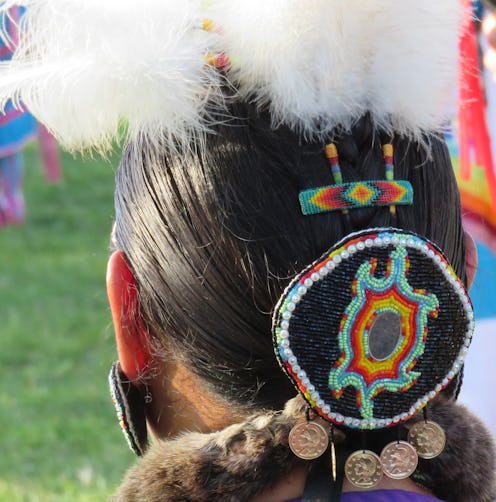
Have you ever worn a feathered headdress as a part of a Halloween costume, rocked a bindi as a fashion statement, or donned cornrows because Kylie Jenner did? If you're guilty of sporting any of these pieces of attire while not belonging to the racial or cultural group from which they hail, you've committed the act of cultural appropriation. If you're wondering "What's cultural appropriation?", or if you're ready with your defense of why wearing these things should be seen as a compliment (spoiler: it's not), Franchesca Ramsey of MTV's Decoded is ready to bust all of the myths about cultural appropriation that you might believe.
Before we get into the myths, let's first define what cultural appropriation is and identify why it's different than cultural exchange or appreciation. According to Everyday Feminism, cultural appropriation refers to borrowing aspects of a culture that isn't your own — an act which reflects "a power dynamic in which members of a dominant culture take elements from a culture of people who have been systematically oppressed by that dominant group." So, even if you don't think wearing a headdress at your favorite music festival is a big deal, it definitely is a big deal. This is what makes cultural appropriation different from cultural exchange or appreciation: Cultural appropriation oppresses people and groups; cultural exchange and appreciation do not.
Now that we've cleared up what cultural appropriation is and why it's harmful, let's take a closer look at three of the myths Ramsey busts. To see all seven, make sure to watch the full video below.
1. MYTH: "Don't You Have Something Better To Worry About?"
Probably one of the greatest myths about cultural appropriation is that it's really not that big of a deal, especially with so many other issues plaguing humanity. This is wrong for a couple of reasons: First, you can care about multiple issues; they don't need to be ranked according to how important you or anyone else thinks they are. And second, it actually is a big deal, since the "borrowing" that's taking place in cultural appropriation is more like stealing. Not only that, but people of color still face stigma for wearing this hairstyle — so much so that some people have lost their jobs or been banned from school for it. Meanwhile, people who appropriate them are frequently celebrated as style icons. See how this is actually a pretty huge problem we should be more worried about?
2. MYTH: "Someone From That Culture Said It Was OK."
I've definitely heard someone say more than a few times that their feathered headdress or tribal tattoos were OK because someone from that culture gave them a stamp of approval. It's not an issue that someone from that culture said it wasn't offensive; the issue is that one person doesn't speak for their entire group. Just because one person doesn't find it offensive doesn't mean that it isn't offensive to anyone.
3. MYTH: "If Chinese People Wear Blue Jeans, Aren't They Appropriating My Culture?"
As Ramsey points out, this myth takes on multiple forms, as similar arguments have been made for black women having blonde hair or even just speaking English. But, here assimilation is being mistaken for appropriation, which are not the same thing. "Marginalized people conforming to standards set up by dominant, or in this case Western Cultures, is often a means of survival," Ramsey explains. So in many cases, people of color don't really have a say in whether or not they want to adopt Western cultural norms; they have to do it if they want to have any chance of fitting in. Ramsey cites example of this including students being suspended for speaking Spanish and indigenous languages at school, who are forced to assimilate into Western society. So, remember that appropriation is very different from assimilation here.
To see four more myths about cultural appropriation busted by Ramsey, watch the full video below.